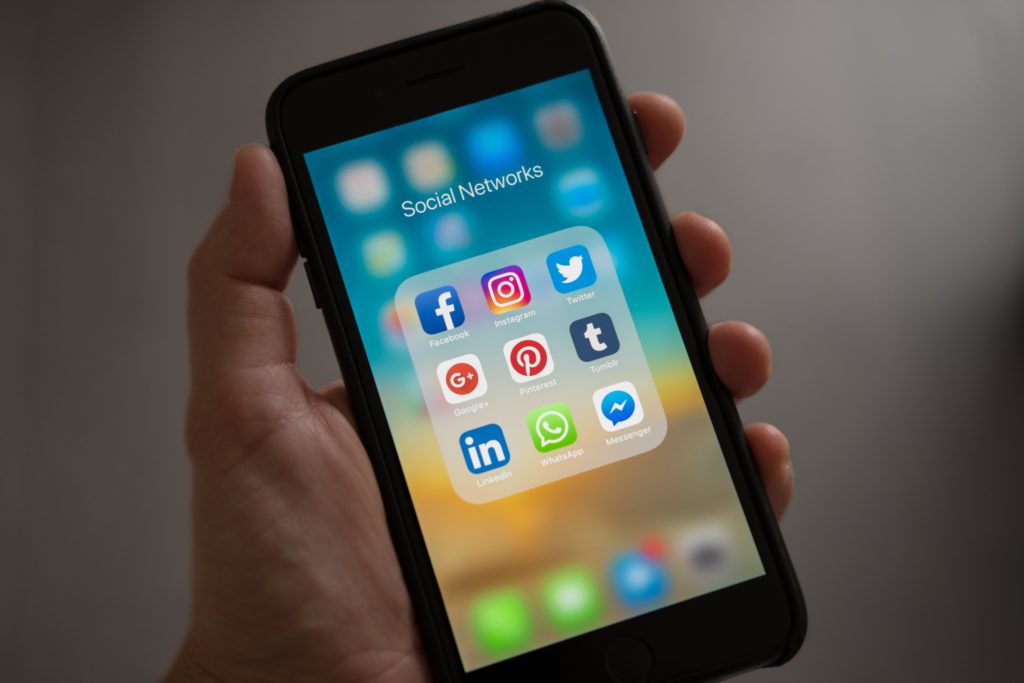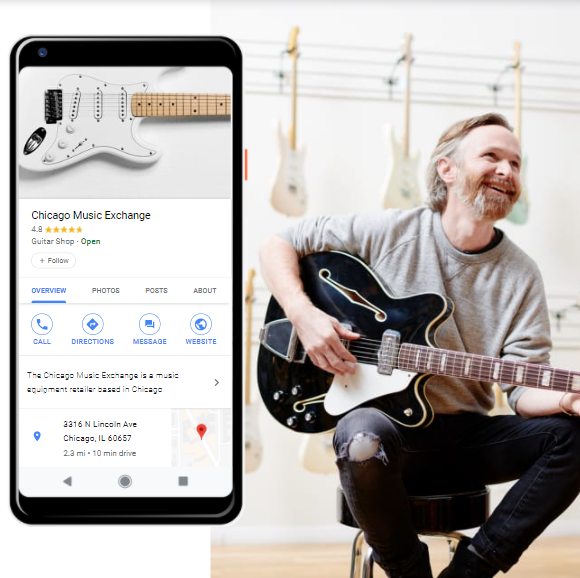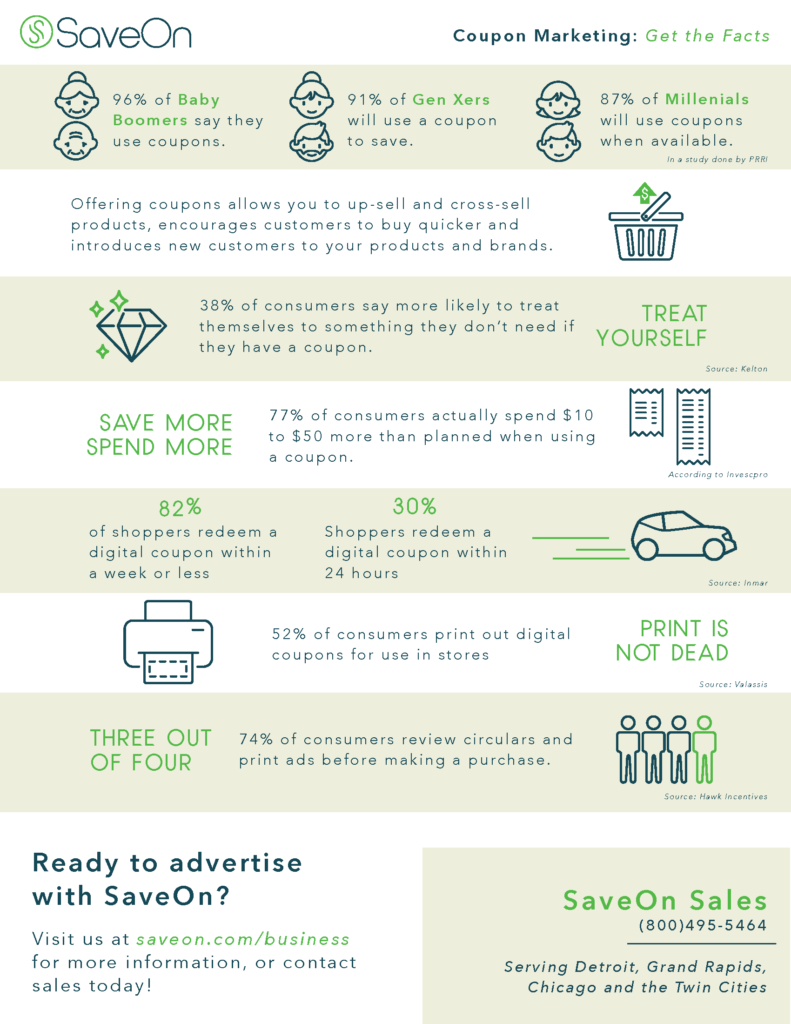Having a solid consumer product or service is only half the battle of owning a successful business. The other major piece of the puzzle companies try to perfect is getting customers through the door. A recent survey found more than half of Gen Z, millennials and Gen X are actively trying to shop at local establishments.
How do you get local patrons through your doors (or onto your e-commerce site)? Promotion.
Here are nine promotional tactics that can maximize your company’s local traffic.
Social Media Advertising
Social media advertising is a great way to introduce potential local customers to your brand, products and services at a relatively low cost. You can advertise on a number of sites or apps, including:
- Facebook
- LinkedIn
- Twitter
- Instagram
- YouTube
- Snapchat
- TikTok
These popular platforms vary in spending minimums and advertising options, but they all have one thing in common: control. You have absolute control over your campaigns. With social media advertising, you can adjust creative, spending audience and more throughout the campaign at no extra cost, as seen in traditional advertising.
Another benefit of advertising on social media is that your ads can be seen 24/7. With traditional media, you often pay a flat rate for an ad — and if people don’t see it, they don’t see it. Social media ads run all day and night, and they bill by impressions, clicks or conversions. This results-based billing method is enticing to companies that have a tight budget and need hard ROI.
A third pro to social media advertising is your ability to easily target and track audience engagement. Social media platforms let you target people by age, gender, location, job titles, interests and more, so you will be able to get as specific as you want, ensuring your money is going toward the people most likely to buy your offerings. Additionally, the analytics included in the platform will let you know your impressions, reach, clicks, audience demographics, etc.
Digital Advertising
Digital advertising is another way to meet your audience where they are. In fact, a report from Hootsuite and We Are Social discovered people are spending around six hours and 42 minutes on the internet every day. This presents a unique opportunity for businesses to target their local audiences through digital ads.
Through online advertising, your business can increase brand awareness, build a better understanding of your audiences and their behaviors, and create higher-performing content.
Like social media advertising, digital advertisements are billed based on interaction and run 24/7. You can also adjust creative more easily than traditional ads. This type of advertising has a few popular options for advertisers, including:
- Geofencing – Targeting audiences by building a geographic boundary. When a mobile device enters the geofenced area, some form of ad will be triggered to populate their phone.
- Retargeting – Ads that are sent to people who have recently visited your website to remind them of your brand, products or services.
- Display – Push ads that appear based on targeting parameters.
- Search – Pull ads that appear when someone searches keywords that you have paid for.
Traditional Advertising
Traditional advertising includes newspapers, magazines, billboards, radio and direct mail. Although we’ve talked about some of the downsides of traditional advertising, there are still many benefits of using traditional media.
For one, your target audience may prefer to see ads on traditional platforms. Older generations like Gen X, baby boomers and traditionalists tend to be more receptive to traditional ads than millennials and Gen Z.
Another upside to using traditional advertising is it gives your company a bit of legitimacy among people who are unfamiliar with your brand. Younger generations who grew up with the internet know to be skeptical of scams and fake news online. If they are unfamiliar with your brand, you may come off more legitimate in traditional media because they are thought to be more trustworthy.
Finally, by advertising out in the community, you will be sure to reach people locally and build word-of-mouth publicity.
SEO
Search engine optimization is another tactic that can be used to promote your business and pull people into your website. Simply put, SEO is the process of increasing the quantity and quality of traffic to your website through organic search results, according to Moz. Ensuring your website has useful content, includes keywords that people are searching for (without overdoing it), have informative title tags and meta descriptions, and build qualified inbound links will help you rank higher in organic searches, which will drive people into your website.
Sponsorships
Sponsoring community events has two major benefits. First, it can get your business’s name out in front of the right local audiences. Secondly, it generally supports good causes or organizations that help your community. Local sponsorships tend to not be overly expensive, and they also help your brand build credibility and good rapport. Sponsorships sometimes will even include the opportunity to have a booth or table at the event, which gives you the chance to meet and talk to potential customers. This is an awesome way to introduce your company in a fun and authentic way.
Host a Sale with a Community Link
I’m sure you’re thinking, “We have sales all the time, and it only brings in a few extra purchases.” What can make these sales more exciting to potential customers is connecting them to a local event like a big game, community event or gathering, or a holiday that your town loves. Bringing locality to a sale or having it connect with other things happening in the area makes your sale more relevant, adds an excitement element, brings attention to the sale and will likely attract more local customers to your business.
Offer Samples or Product Demos
Who doesn’t love free samples or trying before you buy? People love to get free stuff and know exactly what they’re buying. Giving away free samples and offering product demos give the customers a chance to test out your product or service and see that they can’t live without it.
Strategic Partnerships
Strategic partnerships are used all the time in marketing. Starbucks and Barnes and Nobel, Spotify and Uber, Nike and Apple, and Taco Bell and Doritos are famous examples of hugely successful strategic partnerships. Partnering with a local, reputable business does a few things. It expands your marketing efforts, doubles your audience reach, adds value for media coverage, creates excitement and builds brand credibility. Many local businesses form partnerships every day to increase local traffic to their businesses.
Content Marketing
Breaking through all the noise from the internet, advertisements and media is harder than ever for businesses. Content marketing is a proactive strategy to create interesting, shareable content in which your audience is interested. Your content should have a narrative and tell a captivating story. This helps you appear authentic and gets people genuinely energized about your products and services without feeling like you’re just trying to sell to them. Types of content marketing can include:
- Blogs
- Social media
- E-books
- Videos
- Photo galleries
- Websites
- Webinars
- Infographics
- Podcasts
- Paid ads
Our team has been working in the marketing realm for decades, not just promoting our own brand but helping connect businesses to local savers. We are always here to guide you, answer your questions and to help you increase sales. Learn more about how partnering with SaveOn will help you reach your business goals at saveon.com/business.
















